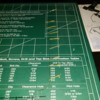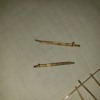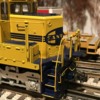Okay, I am rebuilding and converting an ALCO RS-3 to a low nose RS-3 to replicate the old D&M RR out of northern Michigan. The problem I am running into is mastering the frustration of doing the custom handrails with 28 or 26 Ga brass wire. I have bought the stanchions for the wire, have drilled the proper sized holes, but the continued curling and uncooperative attitude of the wire is bringing out the frustration. HA, not giving up though...Long ways to go
Oh, I did go out and buy the jewelry and small wiring bending tools from Micro Mark and they are nice to work with once you get the basics down.
I'm looking for any tips or tricks on how to do this with less frustration and gaining forward momentum towards finally getting this conversion project off top center.
Thanks














































